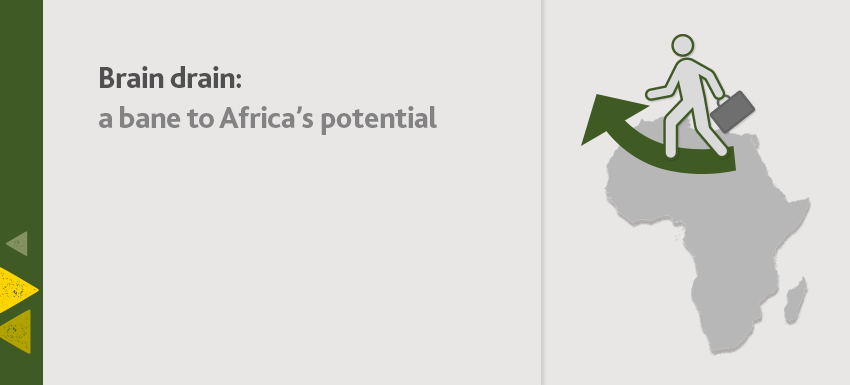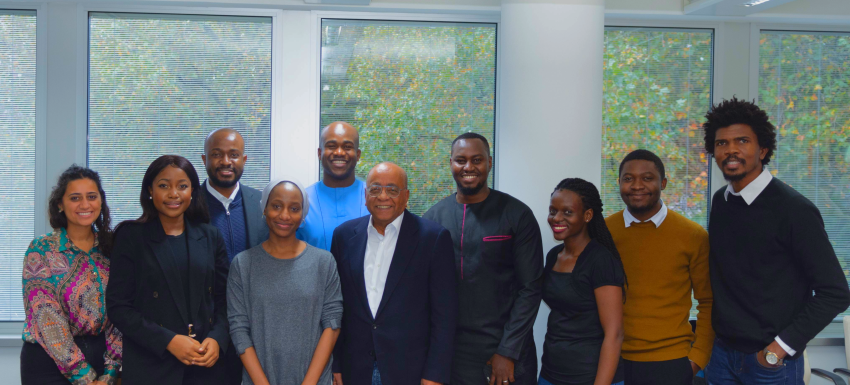The opinions expressed in this article are solely those of the author, and do not necessarily reflect the opinions or views of the Mo Ibrahim Foundation.
More than 100 young African experts from the Mo Ibrahim Foundation’s Now Generation Network (NGN) have recently been surveyed on their opinions on Africa’s financing agenda in order to explore youth perspectives and recommendations for the continent.
In this guest blog, we are honoured to share contributions from Nomahlubi Jakuja, Senior Economist at the Social Policy Initiative, Joe Lemaron, 2022 MIF Fellow at the African Development Bank Group and Ujunwa Ojemeni, Senior Policy Advisor at E3G. They shared their perspectives on three key questions on the topic of financing Africa.
What are the key sustainable finance mechanisms for Africa?
Africa has significantly pronounced development challenges requiring a large volume of funds funnelled through key sustainable finance mechanisms. However, before identifying these, it is imperative to identify what sustainable development financing should seek to achieve on the continent:
- Sustainable financing in the continent should aim to address susceptibilities caused by social, economic and environmental factors in a manner that increases “access” resulting in more inclusive growth and development.
- It should aim at strengthening an enabling business environment, creating local, regional and international partnerships.
- It should aim to showcase Africa’s unique opportunities by facilitating accurate real-time information sharing platforms and putting the people of Africa first.
No single source of financing is independently sufficient to tackle financing sustainable development on the continent successfully. Three of the key sustainable finance mechanisms most needed for Africa are sovereign wealth funds, private financing and blended finance. African governments should pursue sovereign wealth funds as a financing option for sustainable development, seeing as they’ve recently been focused on longer-term investment strategies and have increased in both number and scope. Africa should also aim to attract more private financing as a key sustainable finance mechanism. It has been pivotal in driving growth and job creation in many countries; however, we’re still seeing a dearth in mobilisation of long-term financing for sustainable development coming from private financiers. Finally, blended finance is a key financing mechanism due to its utilisation of both public and private resources and subsequent bolstered financing potential – though we must ensure that we minimise the risk that members of the public sector take on.
When it comes to implementing all of these sustainable finance mechanisms, African governments have a crucial role to play in constructing robust policies that incentivise longer-term investment by private actors and engendering a healthy and well-functioning business environment.
Infrastructure was ranked in the top three priority sectors by about 40% of respondents but also selected with the second largest financing gap. How would you assess Africa’s infrastructural development (achievements/challenges) and what key aspects still need to be improved?
Africa’s infrastructural development has made significant strides, notably significant growth in infrastructure investment over the past decade, several major infrastructure projects, progress in promoting regional integration through infrastructure development initiatives, technological innovations to leapfrog traditional infrastructure constraints, and increased PPPs to finance and deliver infrastructure projects. However, significant challenges remain, including financing gaps, maintenance deficiencies, spatial inequality, regulatory constraints, climate risks, and cross-border coordination challenges. Boosting Africa’s infrastructural development will require larger financing pools and some key aspects to be improved.
First, more effort must be put into domestic resource mobilisation. The development of local capital markets will go a long way toward mobilising domestic capital to meet countries' rising expenditure needs. Second, rising debt service costs for many countries, worsened by the weakening of several local currencies, require a reasonable balance between external and domestic borrowing, especially with a greater focus on lending in local currencies to mitigate rising foreign exchange risks. Third, countries must better manage and derive greater revenue from their enormous natural resources through better governance and transparency, avoiding transfer pricing, and ensuring appropriate value is generated from royalties and taxes. Fourth, the G20 common framework needs to be accelerated. Fifth, rechannelling Special Drawing Rights (SDRs) to the MDBs, leveraging them by up to four times additional low-interest and long-term financing.
These concerted efforts are instrumental in enhancing financing mechanisms, strengthening governance and institutions, prioritising maintenance and operation, promoting inclusivity and sustainability, and fostering regional cooperation and integration.
Adaptation was selected as Africa’s top climate priority by an overwhelming majority of almost 70% of respondents. How crucial is it for adaptation to be prioritised in Africa and what climate finance initiatives are necessary for the goal to be achieved?
Adaptation is paramount for Africa due to its vulnerability to climate change impacts. From extreme weather events to shifting rainfall patterns, African communities face immediate and severe threats to their livelihoods and well-being. Prioritising adaptation means safeguarding lives, ecosystems, and economies against these risks. Moreover, adaptation is crucial for achieving sustainable development goals, ensuring food security, and fostering resilience in the face of uncertainty. To effectively prioritise adaptation, robust climate finance initiatives are indispensable. These initiatives must address the unique needs and challenges of African countries.
First, enhancing access to finance is crucial. Many African nations face barriers in accessing climate finance due to limited capacity and resources. Streamlining funding mechanisms, simplifying application processes, and providing technical assistance can improve access for vulnerable communities. Second, mainstreaming adaptation into development planning is essential. Climate finance should be integrated into national budgets and development strategies to ensure coherence and effectiveness. This includes prioritising adaptation projects in sectors such as agriculture, water management, and infrastructure. Third, innovative finance mechanisms are needed to mobilise additional resources for adaptation. This includes leveraging public-private partnerships, green bonds, and climate insurance schemes. By diversifying funding sources and attracting private investment, African countries can enhance their resilience to climate change. In conclusion, prioritising adaptation in Africa's climate agenda is not just necessary—it's imperative. By securing climate resilience through targeted finance initiatives, African countries can mitigate the impacts of climate change and build a sustainable future for their people. However, achieving this goal requires collective action, political will, and international cooperation.




